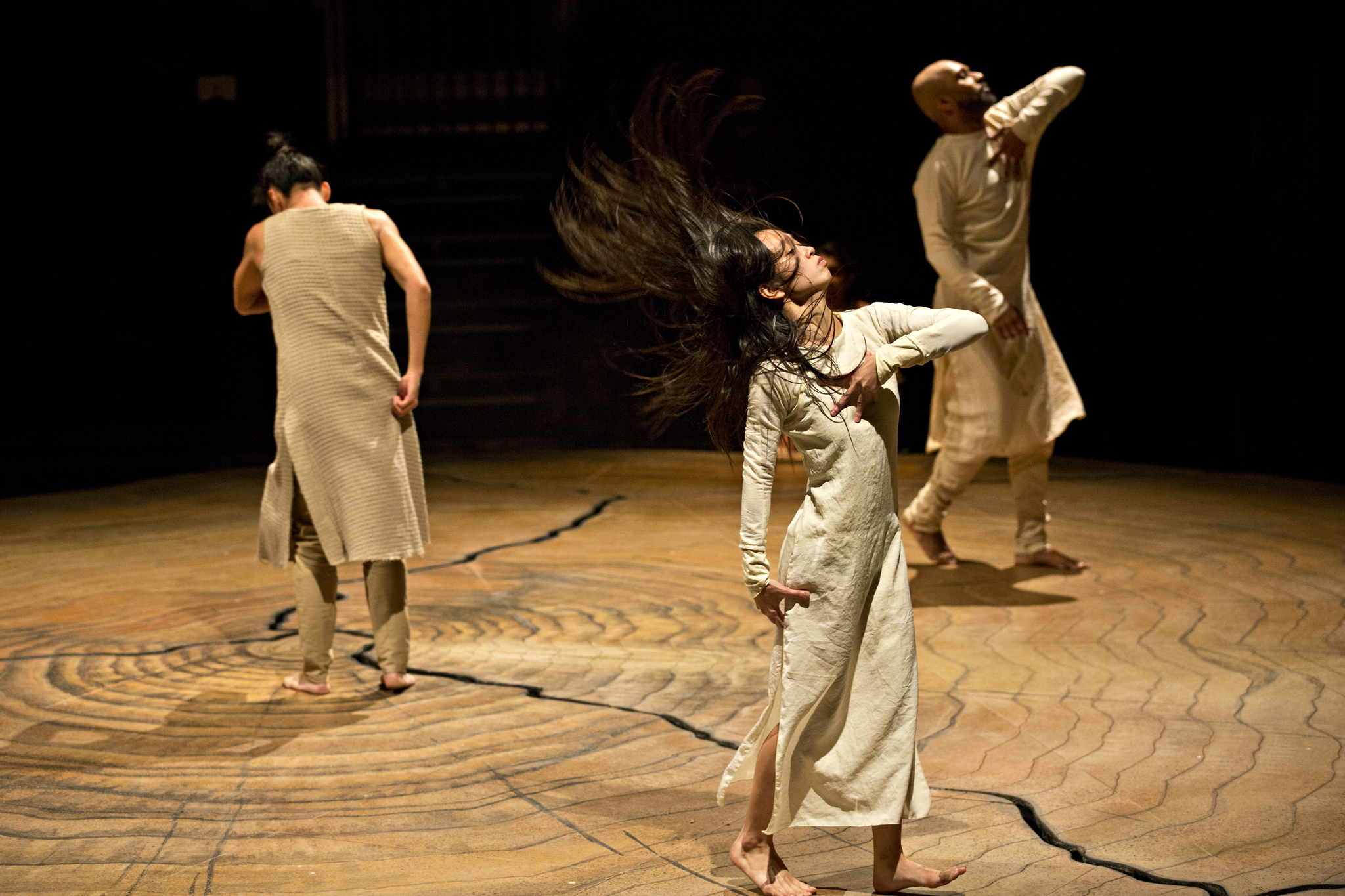 United States Vincenzo Lamagna, Until the Lions: Akram Kahn (choreographer) and dancers, Culver Studios, Los Angeles, 18.10.2017. (JRo)
United States Vincenzo Lamagna, Until the Lions: Akram Kahn (choreographer) and dancers, Culver Studios, Los Angeles, 18.10.2017. (JRo)

Dancers – Akram Kahn, Ching-Ying Chien, Joy Alpuerto Ritter
Production:
Music – Vincenzo Lamagna in collaboration with Sohini Alam, David Azurza, Yaron Engler, Akram Khan, Joy Alpuerto Ritter
Scenario – Karthika Naïr
Set and Costume Design – Tim Yip
Lighting Design – Michael Hulls
As pure dance, Akram Kahn’s Until the Lions succeeds on many levels, but as narrative, it struggles to make itself understood. Based on Karthika Naïr’s reimagining of a tale from the Mahabharata and told from the perspective of its female characters, Kahn’s dance explores the Indian epic in surprising and engrossing choreography.
Kahn focused his lens on the character of Princess Amba, abducted on her wedding day by the warrior Bheeshma. In a scheme of vengeance, difficult to follow in this dance drama, Amba is reborn as Shikhandi, a male warrior, who kills Bheeshma in battle.
With its unconventional staging in the round, the Los Angeles production found a home on a soundstage at Culver Studios, the former site of RKO. The dance unfolded on a raised platform, conceived by Tim Yip, and created to resemble a cross section of a 30-foot tree trunk complete with tree rings and fissures. It put me in mind of the earthworks of Walter de Maria and Richard Long, and became an evocative landscape for the unfolding drama.
Four musicians assembled around the vast trunk and sang, chanted and drummed Vincenzo Lamagna’s percussive score. The choreography, an amalgam of Indian classical dance and contemporary idioms, forged a path both modern and timeless.
Amba, danced by the exquisitely gifted Ching-Ying Chien, was the focus of the tale and a hypnotic presence whether in her solos or duets. A ferocious Joy Alpuerto Ritter portrayed Shikhandi, who at various points in the performance mutated from feral cat on all fours to upright warrior. As Bheeshma, Kahn was an implacable force, whether spinning like the earth on its axis or tossing the delicate Chien over his shoulder with frightening purpose.
In their pas de deux, Kahn and Chien seemed locked in a primal tango of eroticism and rage, and it was here and in Chien’s solo dancing that the work grew mythic in scope. Her ability to convey both vulnerability and strength, to inspire both compassion and fear, was a perfect blend of Kahn’s choreographic vision and Chien’s skill as an artist. Dressed in white, with straight black hair to the waist that flew with every turn or tumble, Chien had an otherworldly presence.
The weakness of Until the Lions lay in the sections that attempted to deliver narrative. While one struggled to understand the unfolding action, the dancing began to feel secondary to the clunky storytelling. This is not Kahn’s problem alone but a feature of the work of many contemporary modern choreographers who, in conveying meaning, overload pieces with symbolism and significance rather than trusting the choreography to speak for itself.
Kahn was at his most significant and original when he and his principals were engaged in pure dance. The expressive Chien awed as she slid, swayed or galloped with abandon across the platform. Ritter, eyes popping like a tiger in a Japanese Edo painting, created dramatic tension as the torso and limbs of her muscular body crouched and writhed with menace. As for Kahn, he gave the bulk of the dancing to the women; but he mesmerized in his pas de deux with Chien and in solo sections in which his nimble footwork displayed the Kathak steps of Indian dance.
Kahn joined the cast of Peter Brook’s nine-hour version of the Mahabharata for two years when he was only thirteen. With a childhood rooted in the Sanskrit poem, it’s no wonder that he was able to fill a vast soundstage with the solemn grandeur of a mythic world.
Jane Rosenberg
